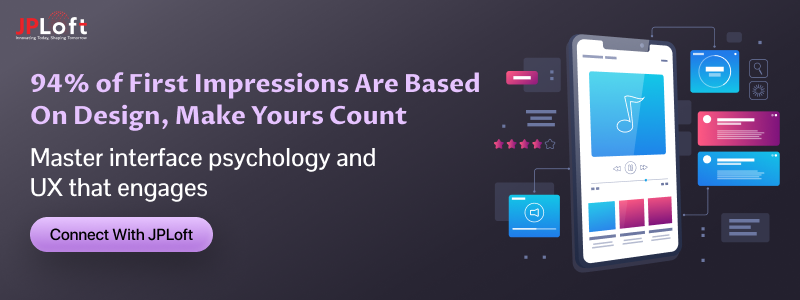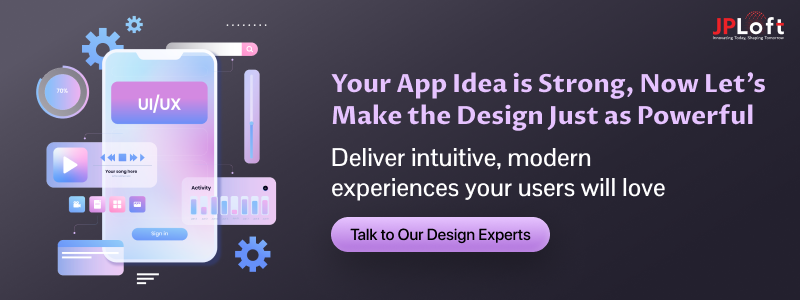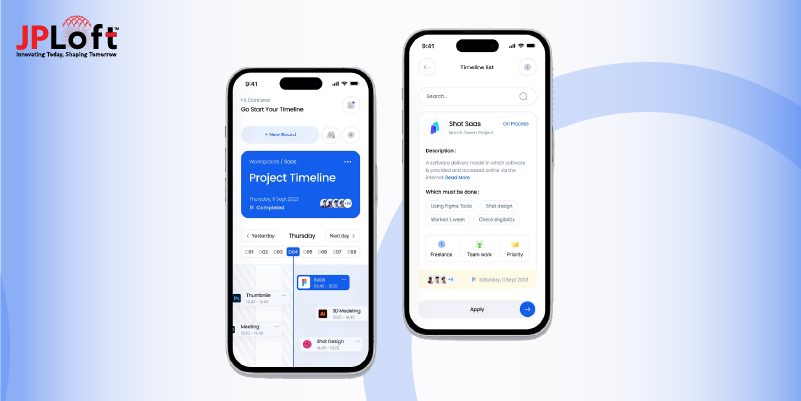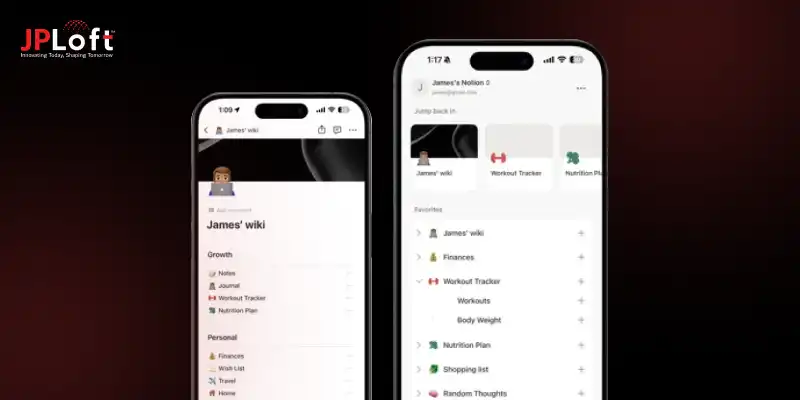Why Mobile App Design Matters More Than Ever in 2025?
“Design is not just what it looks like and feels like. Design is how it works.” — Steve Jobs
That single sentence captures everything you need to know about mobile app design.
Think about it: your app might have the most powerful features in the world, but if it’s clunky, hard to navigate, or just plain dull, users won’t stick around.
In today’s fast-paced digital space, great design isn’t a “nice-to-have.” It’s your first impression, your retention strategy, and your competitive edge wrapped into one.
Whether you’re launching your first app or revamping an existing one, this mobile app design guide will walk you through everything: what makes a design great, how to design a mobile app that users love, and the tools, principles, and trends shaping the future of UI/UX in 2025.
Ready to design something people actually enjoy using? Let’s get into it.
Key Takeaways
Great mobile app design directly impacts user retention, engagement, and brand credibility.
Following a structured guide to design a mobile app ensures clarity, functionality, and visual consistency.
AI tools are revolutionizing mobile app UI/UX design by enhancing personalization, accessibility, and efficiency.
Estimating the right mobile app design cost upfront avoids future rework, churn, and user drop-offs.
Partnering with JPLoft gives you access to a design-first team that builds intuitive and visually polished mobile apps.
Mobile App Usage in 2025: What the Numbers Say!
Let’s talk numbers because the data doesn’t lie.
As of 2025, mobile apps are everywhere. But the reality is clear: most users abandon apps fast if the experience doesn’t deliver. That’s where the best mobile app design becomes make-or-break.
Here’s why user experience has never been more important, according to the latest app usage data:
-
7.5+ million apps live across iOS and Android platforms (Statista/Q3 2025).
-
28% of users uninstall an app within 30 days, often due to poor UX or performance.
-
Nearly 50% of users won’t return to an app after one bad experience (e.g. glitches or ugly UI).
-
Global smartphone users spend an average of 4.9 hours daily on mobile apps.
-
Over 4.8 to 5.0 hours per day device use overall, with ~89% in apps.
-
70% of apps lose their users in the first week (45% for top apps; 70% overall).
Today’s users demand more than feature-rich apps; they expect sleek, intuitive, fast, and visually compelling mobile app UI/UX.
Not sure where to begin? Dive into this mobile app development guide to see where design fits into the bigger picture.
Remember: great design alone isn’t enough. It needs to function flawlessly. That’s why testing matters.
Every element, button, navigation, and animation should be built with the user in mind. That’s what successful mobile app interface design is all about.
Why Great Design Can Make or Break Your Mobile App?
Here’s the truth: people don’t just use apps; they experience them.
And that experience begins with design.
Whether you’re building a fitness tracker, a food delivery platform, or a mobile banking tool, the UI/UX of a mobile app directly impacts how people feel using it. Is it smooth or frustrating? Friendly or confusing? These first impressions come from design, not just code.
A] First impressions are visual
Users form an opinion about your app within seconds of opening it. If it looks outdated, cluttered, or poorly organized, they’re likely to close it before exploring its features.
B] Better design = higher retention
Great design simplifies navigation and enhances usability. When users can quickly find what they’re looking for, they’re far more likely to stick around and come back regularly.
C] Clarity reduces churn
A clean, intuitive layout prevents frustration and confusion. If users can achieve their goal without having to think too much, they’re less likely to uninstall your app.
D] Design directly influences revenue
A seamless user experience boosts conversions. Whether it's signing up, making a purchase, or watching an ad, well-placed buttons and smooth transitions increase engagement.
E] Good design builds credibility and trust
A professionally designed app makes users feel like they’re in safe hands. It communicates that you care about quality and user satisfaction, key factors in long-term loyalty.
The question today isn’t just how to design a mobile app, but why you must prioritize it to compete and thrive.
Need creative inspiration to get started? Check out these best mobile app ideas that show how design meets functionality in real-world apps.
Still not convinced? Take Fetch Rewards, for example. Its growth wasn’t only about what it offers, but also about how simple and fun the interface feels. Here's a detailed guide on how to create an app like Fetch Rewards if you're curious about the mechanics behind great app experiences.
And let’s not forget the money side of things. Great design improves the customer journey and boosts your chances of generating income. Explore this mobile app monetization guide to see how design can fuel your revenue strategy.
At the end of the day, you’re not just building an app; you’re crafting a journey. So go ahead and design a mobile app that people want to use, not one they have to tolerate.
Essential Building Blocks of a Great Mobile App UI/UX
Designing a mobile app isn’t just about colors and typography. It’s about building a system that guides users through their journey smoothly, without them even realizing it. Let’s break down the essential building blocks of mobile app UI/UX design and what makes a great product tick.
1. User Interface (UI)
The layout, buttons, icons, and visual elements your users interact with. A clean and responsive mobile app interface design helps users complete actions quickly and without friction.
2. User Experience (UX)
UX is the overall feel of your app and how intuitive, useful, and satisfying it is to use. Mobile app UX design ensures that user flows are logical, actions are seamless, and frustration is minimized.
3. Navigation Design
Menus, tabs, drawers, and gestures fall under navigation. Poor navigation = lost users. Whether you use bottom tabs or hamburger menus, navigation should feel natural, not forced.
4. Visual Hierarchy
This is about directing attention. Headlines should grab focus, CTAs should pop, and content should be grouped sensibly. It helps users instantly understand what’s important.
5. Responsiveness and Screen Adaptability
Your design should work across devices: phones, tablets, and even foldables. If it looks perfect on an iPhone but breaks on Android, you're going to lose half your audience.
6. Color and Typography
The visual language of your app affects mood and readability. Keep fonts legible and colors accessible. It’s not about being flashy, it’s about being functional and beautiful.
If you're still unsure about how to tie all this together, explore this mobile app wireframing guide to learn how to visually map out your app before jumping into full design mode.
These components work together like gears in a machine. Skip one, and the whole experience can fall apart.
Designers also often create mockups and clickable models to simulate how an app feels before it’s built. That’s where mobile app prototyping becomes a huge asset, especially when iterating based on user feedback.
And if you're wondering how the backend ties into your frontend experience, understanding your mobile app tech stack can help align design decisions with actual functionality.
Each component matters, but it’s the mobile app UI/UX that ties them all together to create a seamless, user-centered product.
Key Principles Behind Successful Mobile App UI Design
You’ve got the components, but how do you make sure your app feels right?
This is where core design principles come in. These aren't rules set in stone, but they’re proven guidelines that help transform an average app into a smooth, intuitive, and enjoyable experience. Whether you're building for Android or iOS, the following principles are at the heart of every great mobile app design.
► Consistency is everything
Consistent use of colors, fonts, icons, and spacing builds user familiarity. It reduces cognitive load and makes your app feel intuitive. Design with repeatable patterns in mind.
► Keep it simple
Great design is invisible. Avoid clutter, excessive options, and busy layouts. When in doubt, simplify. Each screen should have a clear purpose and a single core action.
► Design for touch
Your app isn’t viewed; it’s touched. Buttons need to be finger-friendly, gestures must feel natural, and tap targets should be large enough to avoid misclicks.
► Feedback matters
Whether it’s a button changing color when tapped or a loading animation, the app should constantly give feedback. Users want to know something is happening.
► Accessibility isn’t optional
Inclusive design ensures your app works for everyone, including users with disabilities. Use proper contrast, readable fonts, and screen reader support.
► Prioritize performance
A beautiful interface that lags or crashes isn’t helping anyone. Optimize images, animations, and transitions to keep things running smoothly.
► User-first, always
Don’t make users adapt to your design; design around how users naturally think and behave. This is the essence of strong user experience design for mobile apps.
To see how security impacts user trust and UX, brush up on mobile app security best practices. After all, no amount of sleek UI matters if users feel their data isn’t safe.
Want to tie these principles into actual product development? Here’s how to create an app that integrates great design from day one.
Applying these principles of mobile app design helps you move beyond just making something pretty; you're creating something functional, reliable, and user-loved.
Step-by-Step Guide to Design a Mobile App in 2025
Designing a mobile app in 2025 isn’t just about visuals; it’s about solving problems, delivering value, and creating a user journey that just feels right. Whether you're designing a simple utility app or a robust eCommerce platform, a strategic and user-centered approach is key.
Let’s walk through a comprehensive guide to design a mobile app step by step:
Step 1: Understand Your Users
Before you sketch a single screen, know who you're designing for. What are their goals? Pain points? Expectations? Build user personas to guide every design decision.
Step 2: Define the Core Features and Flows
Decide what your app needs to do and how users will navigate it. Create basic user flows to understand how a person will move from screen to screen to accomplish tasks.
Want to go from concept to clickable ideas? Learn how to build an AI app with seamless user journeys and smarter features.
Step 3: Start with Wireframes
Wireframes are blueprints of your app. No colors, no images, just structure. This is where layout and functionality take form. Wireframes help you test concepts early without investing in design polish.
Step 4: Move to High-Fidelity UI Design
Once wireframes are approved, bring them to life with visuals. Choose color schemes, typography, icons, and imagery that align with your brand. Focus on clarity, consistency, and accessibility. A strong mobile app UI design creates trust and makes interaction seamless.
Step 5: Build Interactive Prototypes
Before diving into development, build a clickable prototype using tools like Figma or Adobe XD. It gives stakeholders and testers a real feel for the app, helping catch issues early.
You can also align this stage with a robust mobile app testing guide to ensure your prototype is on track with usability and functionality standards.
Step 6: Get Feedback and Iterate
No design is perfect the first time. Gather feedback from real users or team members and improve the interface. Iteration is where good design becomes great design.
Curious how much this process might cost? Even design has a price. Consider this: the cost to build a car listing platform like DubiCars includes heavy design optimization as part of its success formula.
Step 7: Hand Off to Developers (Cleanly!)
Prepare design files with full specs, design tokens, and annotations so developers can implement them pixel-perfect. Clear documentation avoids misinterpretation and keeps dev time efficient.
Designing an app isn’t a one-and-done task; it’s a continuous process of improvement. A strong UI/UX design for mobile apps is built on collaboration, feedback, and adaptability.
By following this complete guide to design a mobile app, you’ll be on your way to building a product that users not only enjoy but also recommend.
How Is AI Transforming Mobile App UI/UX Design?
AI isn’t just changing how apps work; it’s changing how we design them.
In 2025, artificial intelligence plays a major role in shaping better, smarter, and more personalized design experiences. From automating design tasks to predicting user behavior, AI is making mobile app UI/UX design more efficient, data-driven, and scalable than ever before.
Let’s look at how you can design a mobile app with AI and why it might be the smartest move you make this year.
A] Smarter Personalization
AI analyzes user behavior and preferences to tailor layouts, content, and features in real time. Imagine an app interface that adjusts itself to match how each user interacts—that’s AI-powered customization at work.
B] Automated Design Suggestions
Tools like Uizard, Galileo, and Framer AI can generate UI mockups from simple text prompts. This streamlines brainstorming and lets you test more ideas faster, saving both time and design costs.
Looking to explore more design possibilities with AI and scale your team intelligently? You can hire dedicated developers who specialize in AI-led product design.
C] User Behavior Prediction
AI algorithms can track how users move through your app and identify drop-off points. Designers can use these insights to improve navigation, simplify flows, and increase engagement.
D] Accessibility Enhancements
AI tools help flag contrast issues, suggest text alternatives, or automatically adjust layouts to suit different accessibility needs, improving inclusivity across the board.
E] Automated A/B Testing
Instead of manually running A/B tests, AI can test variations and quickly identify what works best color schemes, button placements, and even onboarding flows.
When you design a mobile app with AI, you’re not just making it look good; you're making it smarter, more responsive, and future-ready.
And if you're planning to take AI beyond design into development, consider working with an experienced AI app development company that understands both functionality and UX.
The line between design and intelligence is blurring, and that’s a good thing. With AI, you're not replacing designers, you’re empowering them to create faster, test smarter, and design apps that adapt to real user needs.
What’s the Real Cost to Design a Mobile App in 2025?
Let’s be honest, everyone wants a sleek, high-performing app, but one of the first questions that comes up is: what’s the cost to design a mobile app? Designing a mobile app can cost you around 20% to 25% of the overall app development cost.
There’s no universal price tag, but several factors heavily influence the final number. From the complexity of features to the designer’s experience and location, your budget can vary widely.
Below are the key elements that determine mobile app design cost:
► Project Complexity & Scope
The more screens, user flows, and animations you need, the more time and budget it’ll take. A simple app with 5–7 screens might cost far less than a large-scale, feature-rich platform.
► Design Tools & Prototyping Needs
Will you need just wireframes or full high-fidelity prototypes? Tools like Figma, Sketch, or Adobe XD have varying levels of output and cost, especially if you’re working with custom illustrations or brand-specific UI kits.
Thinking about building a content-rich platform instead? Here’s a breakdown of the cost to develop a storytelling app like Wattpad. Design plays a huge part in the overall budget.
► Platform-Specific Design
Designing for iOS, Android, and tablets separately requires more time and adaptation. If you’re planning to support multiple devices, expect a higher design budget.
► Custom Design vs Templates
Going with a unique, tailored interface? Custom online mobile app design looks amazing, but it comes at a premium compared to off-the-shelf templates.
Still, estimating the full app budget? This mobile app development cost guide can help you see how design fits into the complete build, from start to finish.
► Team Structure and Location
Freelancers, in-house designers, or outsourced agencies all come with different price points. A U.S.-based design agency will cost more than an offshore team with similar skills.
So, what can you expect?
-
A basic design project (5–7 screens, minimal animations): $2,000–$5,000
-
A mid-tier design (with prototyping, 10–15 screens): $6,000–$12,000
-
A custom, enterprise-grade UI/UX: $15,000–$30,000+
Want a broader idea? Check this estimated complete cost to design a mobile app for a clearer breakdown across stages, tools, and design complexity.
And if you're thinking about online platforms specifically, the numbers can shift. Curious about what’s the cost to design an online mobile app? Find out how features like personalization and real-time responsiveness impact your design expenses.
Ultimately, your mobile app design cost is an investment in user satisfaction. Cut corners here, and you risk spending more later fixing churn, redoing the UX, or chasing lost users.
Biggest Challenges in Mobile App Design (And How to Overcome Them)
Designing a mobile app is exciting, but let’s not pretend it’s easy.
From inconsistent branding to poor usability and device compatibility issues, designers face a lot of pitfalls. And if you don’t solve them early, they’ll show up in the form of bad reviews, low retention, or total user abandonment.
Let’s explore the top challenges in mobile app UI/UX design and how to navigate them like a pro.
1. Inconsistent Design Across Devices
What looks great on an iPhone 15 might break on a Galaxy Z Fold. Device fragmentation makes it difficult to maintain design consistency across different resolutions and screen sizes. Solution? Use responsive layouts and test across multiple platforms from day one.
2. Overloaded Screens and Features
Trying to do too much on one screen confuses users. Over-cluttered layouts make apps hard to navigate. Stick to minimalist design. Follow the “one action per screen” rule wherever possible.
3. Poor Navigation Structure
Confusing or hidden navigation ruins even the best features. If users can’t find what they’re looking for in 2–3 taps, they’ll bounce. Solve this by using familiar icons, intuitive menus, and consistent user flows.
4. Ignoring User Feedback
Designers often overlook valuable insights from users. If your users are pointing out friction points, listen and iterate. Don’t let ego get in the way of great UX.
5. Lack of Accessibility
A great-looking app that isn’t usable for everyone isn’t truly great. Color contrast, font size, and screen reader compatibility should never be afterthoughts; they’re essential.
Building for a secure and inclusive future? Here's how to protect your platform with background verification system and ensure users feel safe interacting with your app.
6. Balancing Creativity With Usability
You want your app to look unique, but going too far off standard design patterns can confuse users. Striking the balance between creativity and usability is key to retaining users long-term.
Need a reliable team to guide execution? Explore these top mobile app development companies in the USA that lead with both design thinking and performance.
And if you're developing a more niche solution like a flight dashboard or IoT-based remote interface, this resource on how to build a drone control app shows how complex controls can still be intuitive and user-friendly.
These hurdles are real, but they’re all manageable. With careful planning, user testing, and the right tools, you can overcome these issues and design a mobile app that’s not just usable but lovable.
Best Practices to Follow While Designing a Mobile App
You’ve got the tools. You’ve got the principles. Now it’s time to put it all together.
Creating a visually striking app is great, but creating one that works for users is even better. Whether you're designing a utility app, marketplace, or something innovative, following best practices ensures your mobile app UI/UX is not only beautiful but functional, too.
Below are some essential practices every designer should live by in 2025:
► Prioritize the User from Day One
Put yourself in the user’s shoes. What do they want to achieve? Where might they struggle? The more user-centric your decisions, the more intuitive your mobile app interface design becomes. It's all about delivering top-tier user experience design for mobile apps, not just pretty screens.
► Maintain Visual and Functional Consistency
Stick to a coherent color palette, font system, and button styling. The smoother and more predictable your UI, the easier it is for users to adapt. Consistency across the UI/UX of a mobile app builds trust and improves usability.
► Design for Thumbs, Not Mice
Your app isn’t used on a desktop. It’s used on the go by thumbs. Keep navigation elements within the thumb-friendly zones, and ensure your mobile app UI design is truly optimized for mobile behavior.
► Microinteractions Matter
Subtle animations or vibrations during actions help confirm that the app is responsive. These tiny details add life and delight to the mobile app UX design, improving the overall feel.
► Optimize for Light & Dark Modes
Users expect visual comfort. Your mobile app UI/UX design guide should include both light and dark theme considerations, especially if your app deals with reading or extended screen time.
► Embrace a Content-First Approach
Design around real content, not lorem ipsum. Content informs layout, not the other way around. This approach is crucial in any complete UI/UX app design guide, especially for apps where clarity and messaging drive action.
► Test and Iterate
Design isn't a one-and-done task. Use user testing, heatmaps, and session replays to see what’s working and what’s not. Applying a guide to design a mobile app means adapting based on feedback, not assumptions.
By sticking to these principles, you’re not just delivering a sleek interface; you’re crafting an experience users will return to again and again. This is the essence of the best mobile app design guide: simplicity, empathy, consistency, and polish.
Partner with JPLoft: Your Mobile App Design Dream Team
Want a mobile app that stands out, not just fits in?
At JPLoft, we don’t just design screens; we craft complete user journeys. Whether you're building a lifestyle app, SaaS product, or AI-powered platform, our design experts bring together visual creativity, intuitive flows, and real-world functionality. From initial wireframes to final prototypes, we’re with you every step of the way.
Looking for a trusted mobile app development company that delivers both UI brilliance and technical excellence? You’re in the right place. Let’s turn your app idea into something your users can’t stop using.
Conclusion
Let’s face it, mobile app design can make or break your product. It’s not just about how your app looks but also how it works, feels, and guides users effortlessly from point A to point Z.
This complete guide to design a mobile app has taken you through the fundamentals—core design principles, components, AI integrations, costs, and real-world challenges. Whether you’re launching a brand-new product or revamping an existing one, applying the right strategies from day one is essential.
The best mobile apps aren’t just built. They’re designed with purpose, empathy, and a deep understanding of user needs.
Put users first, test often, and never stop improving; your design success depends on it.
FAQs
Mobile app design refers to the process of creating the visual layout, user interface, and user experience of a mobile application. It includes everything from wireframes and color schemes to how users interact with the app through navigation, gestures, and microinteractions.
Great design improves usability, boosts user retention, and enhances overall brand perception. A well-executed design helps users intuitively navigate your app, which reduces frustration and increases engagement.
Key components include the user interface (UI), navigation structure, interactive elements (buttons, sliders), typography, colors, icons, and overall layout. Together, they form a cohesive and user-friendly mobile app interface design.
The timeline depends on the complexity and scope of the project. A basic app may take 2–4 weeks, while complex, multi-platform apps with rich animations and custom UI may require 2–3 months or more.
While it varies, a basic design may cost around $2,000–$5,000. More complex projects can range from $10,000 to $30,000+. For more detail, refer to the mobile app design cost section above.













Share this blog